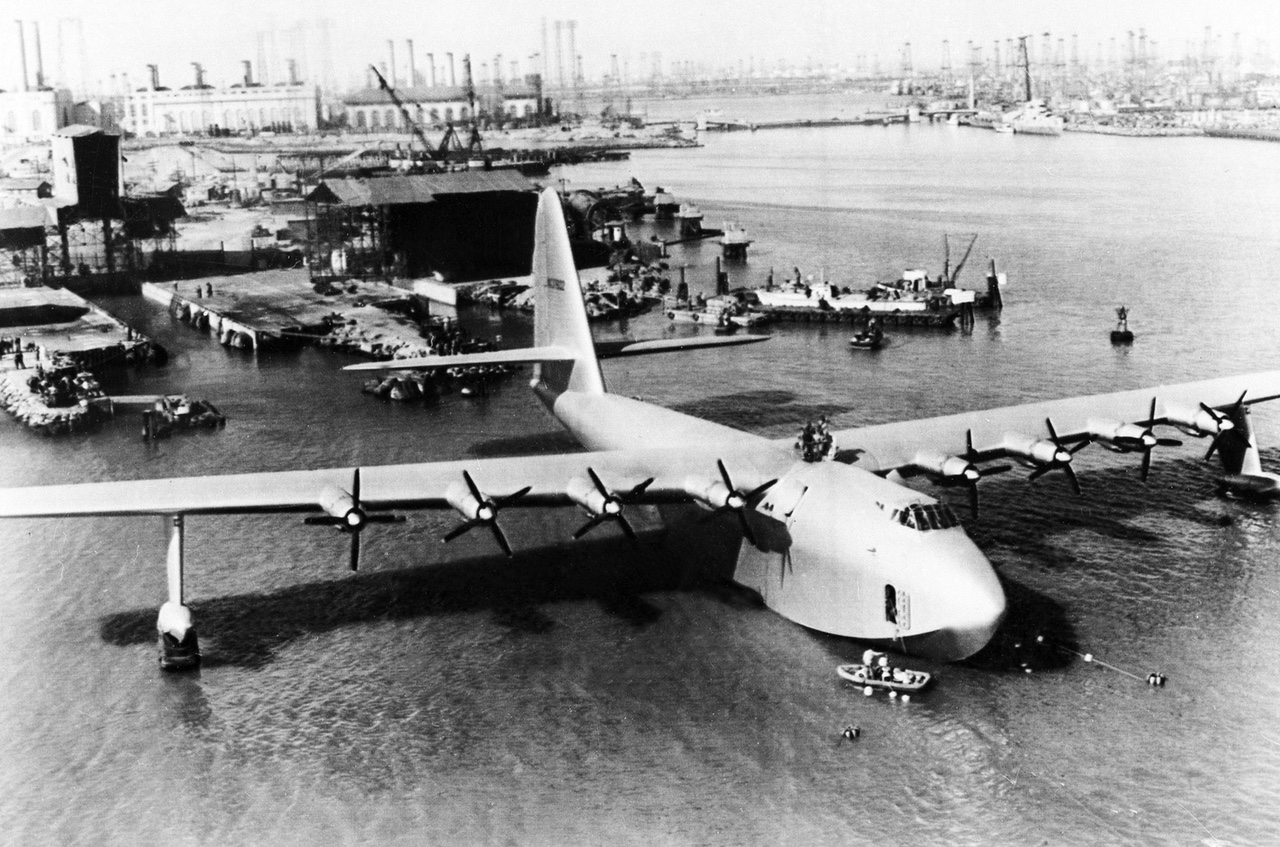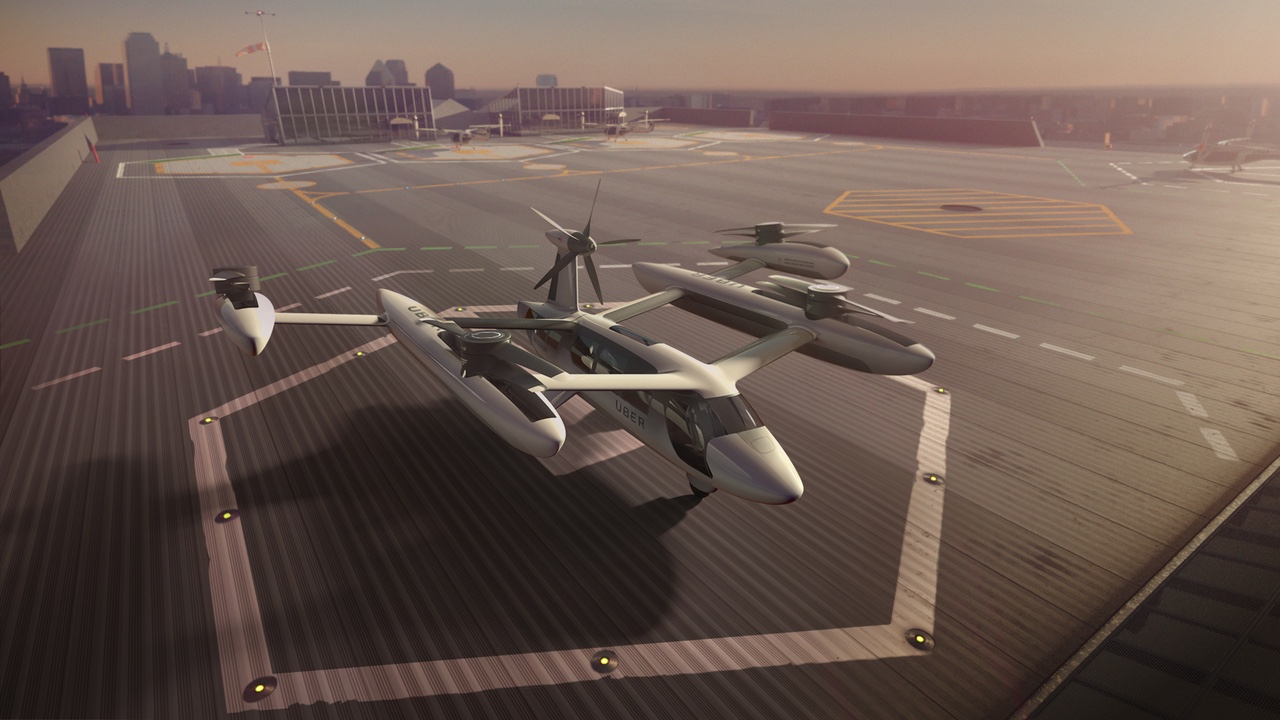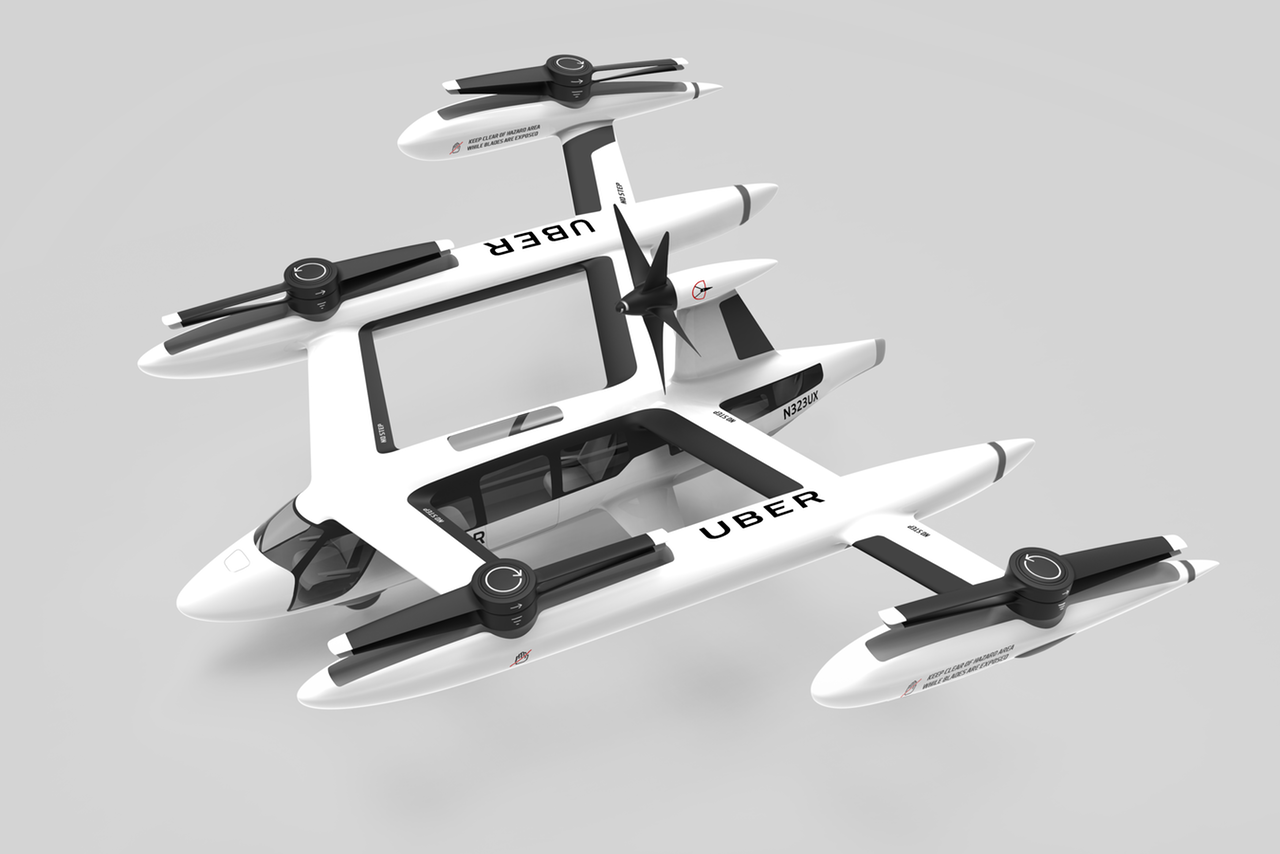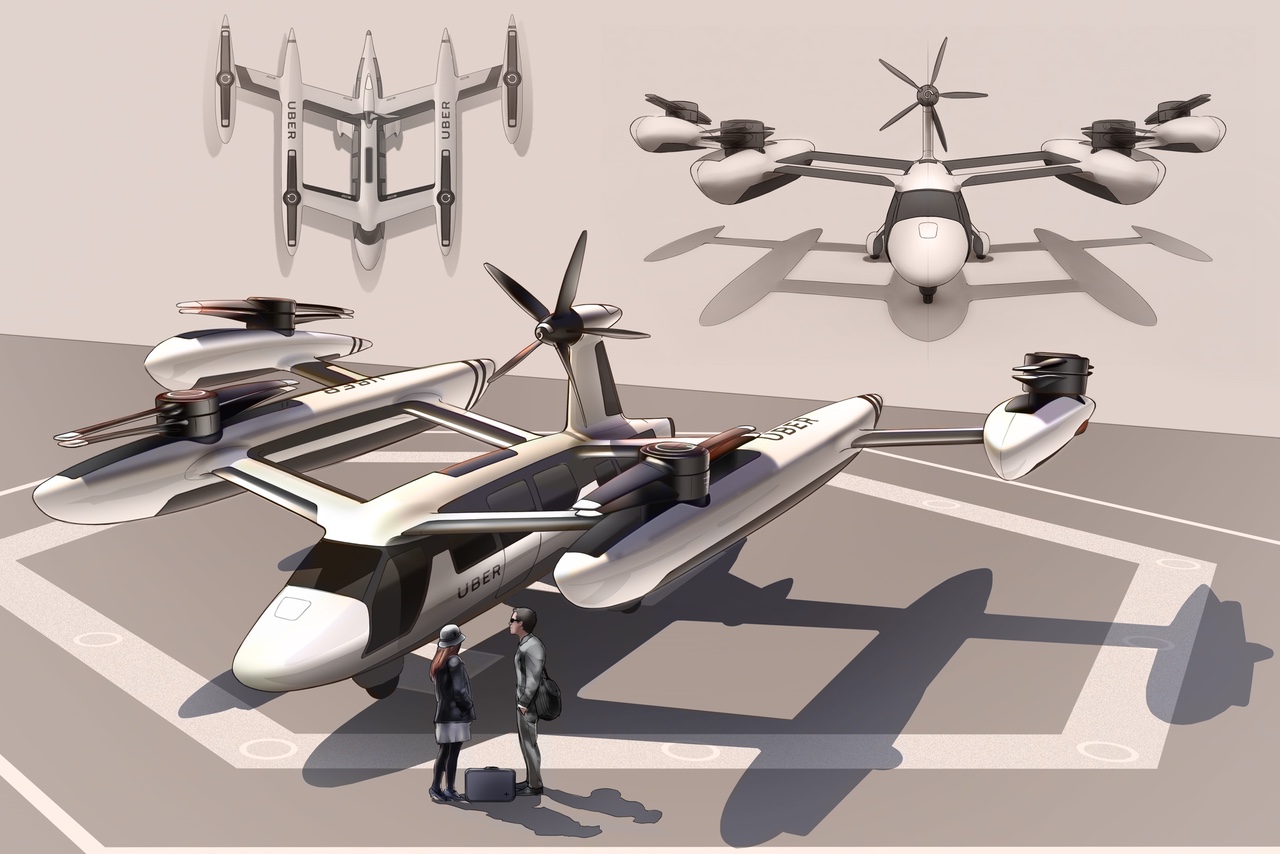Uber unveiled a new design for its futuristic “aerial taxi” at the second annual Uber Elevate conference today. And judging by the concept art, Uber is still trying to figure out how to make electric vertical take off and landing (eVTOL) a practical reality. The company’s latest design looks like the Spruce Goose of flying cars – huge, unwieldy, and something that we’ll probably never see fly.
GIF: Made from an animation of Uber’s latest flying taxi concept (Uber)
“We think cities are going to go vertical in terms of transportation and we want to make that a reality,” Uber CEO Dara Khosrowshahi told CBS News in an exclusive interview this morning about the flying taxis the company says will zip through the air at up to 320km/h.
But we’ve heard that before, just as we’ve heard the same promises that Uber’s flying taxi concept is just a few years away. So what’s different this year? The biggest change is that Uber’s latest version of the flying car looks more complicated. Cartoonishly more complicated, in fact.

Photo: The “Spruce Goose” flying boat belonging to millionaire Howard Hughes, is shown in 1947 (AP)
“Uber’s [concept models] are designed for safe transition between vertical and forward flight, which is achieved through stacked co-rotating propellers,” Uber explained to Gimzodo in a statement.
“Stacked co-rotating rotors or propellers have two rotor systems placed on top of each other rotating in the same direction. Initial experimentation of this concept has revealed the potential for significantly quieter performance than traditional paired rotors and improved overall performance.”

Illustration: Uber
Uber says that the flying taxis will jump from building top to building top, and travel at an altitude of between 300 and 600m. But what about all those rotors swirling around? Won’t they hurt someone?
“The eCRM design is pedestrian friendly, as the propeller blades are as high as possible, leaving ample room for individuals to board and de-plane without having to duck,” said Uber’s statement. “The high placement of the wings provide shaded entry into the cabin, shielding riders from light rain as they board.”

Illustration: Uber
Unlike Ehang’s designs for an autonomous taxi which could theoretically carry one person at a time, Uber is trying a much larger vehicle design in order to squeeze more people in per flight. But the larger Uber’s hypothetical flying taxis get, the more limited they become in where you can land them.
“One of the key tenets of this technology is for us to have four riders in each vehicle,” Khosrowshahi told CBS, emphasising the concept of “efficiency” in everything that Uber does.
The company claims that while the first of its flying taxis would be flown by a person, Uber would eventually have them operate autonomously. And Uber is especially vocal about its partnerships with other companies to get these things into the sky.
“I’m incredibly proud of that Uber has embraced a collaborative approach towards advancing the Elevate ecosystem, and am even more proud to be working tightly with partners while also encouraging non-partners to adopt community friendly vehicles so that we can collectively make this technology a reality in the near future,” Mark Moore, Uber’s Director of Engineering, said in a statement.
There’s no evidence that Uber has even built a full-sized model yet, opting instead for a small model and plenty of slick animations. And, again, that puts them behind companies such as Chinese-based Huawei, who’s already partnering with Ehang and showing off the Ehang 184 in test flights. But Uber is nothing if not good at getting the attention of people who are still dreaming about flying cars filling our skies.
It seems as though everybody is trying to get in on the flying car/taxi game these days. Google cofounder Larry Page launched a startup called Kitty Hawk that recently unveiled a concept car called Cora that’s undergoing tests in New Zealand. And even traditional car companies such as Porsche have suggested that they’d like to get in on the ground floor of the flying car market.

Illustration: Uber
Many hurdles remain before we can expect flying cars to be a practical means of transportation – the utopian promise even earlier. The biggest problem, of course, will be getting around regulatory hurdles that make flying cars, autonomous or otherwise, a political nonstarter. What government official in their right mind will want to push for flying cars if there’s even just a tiny chance that they’re going to fall out of the sky?
Uber’s autonomous car recently struck and killed a cyclist, reportedly because the vehicles sensors saw little more than a piece of trash. That kind of screw up isn’t going to fly (sorry) with government authorities.
